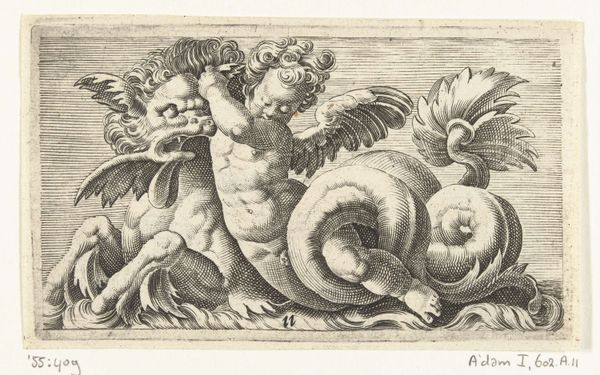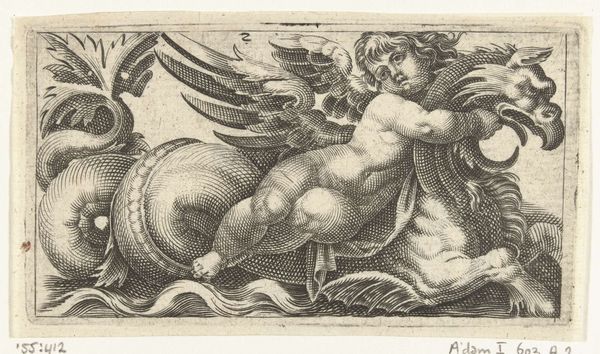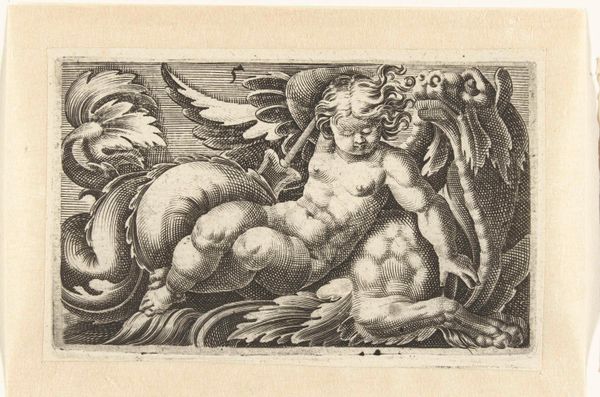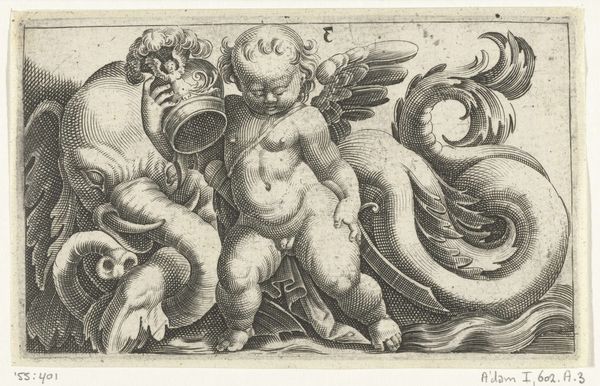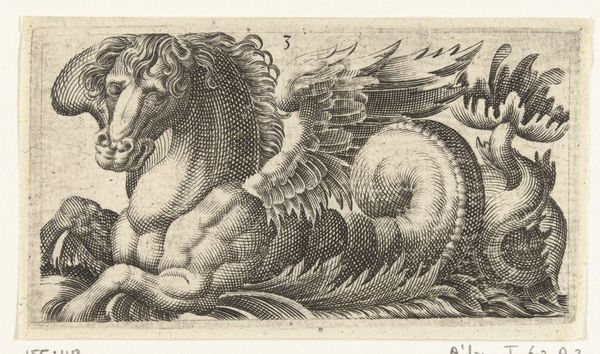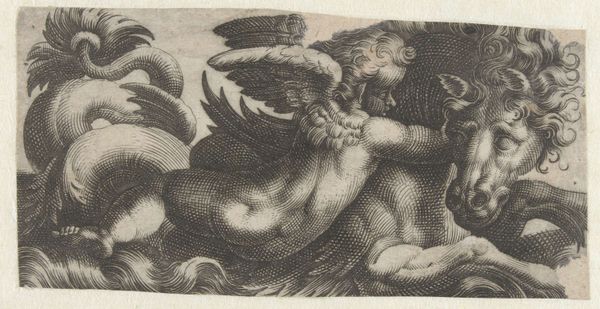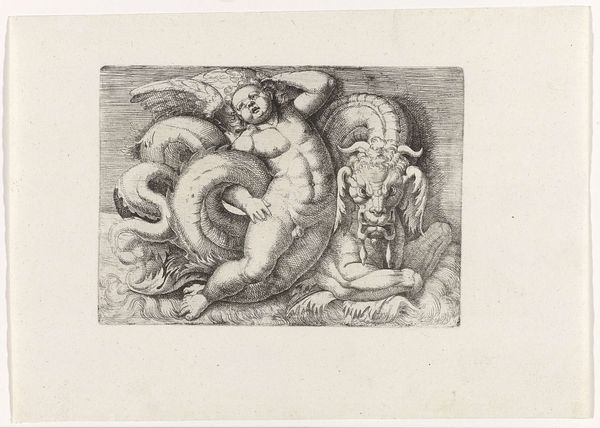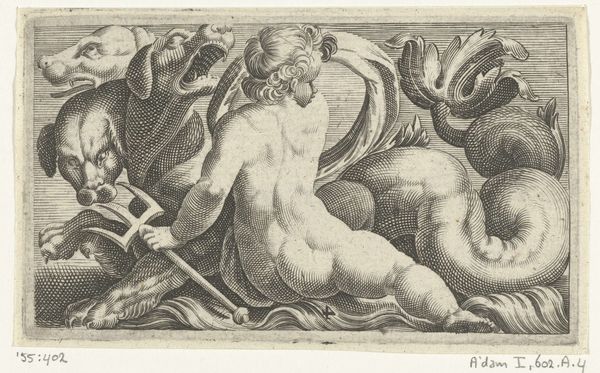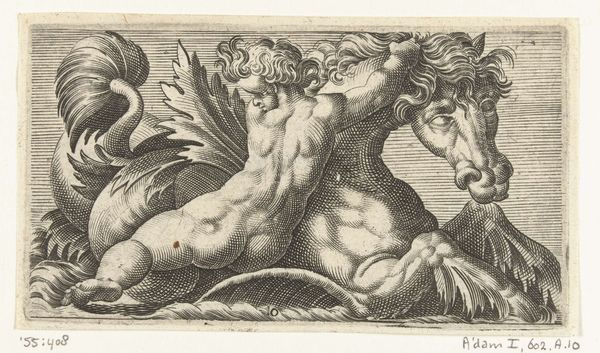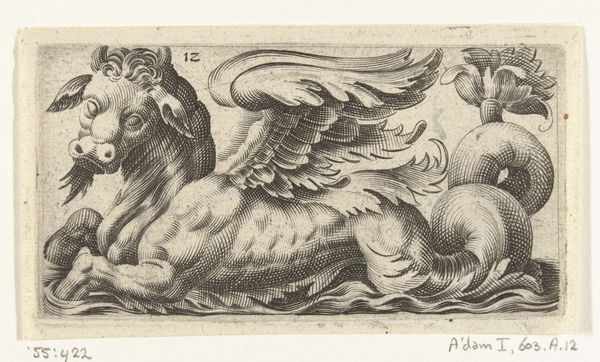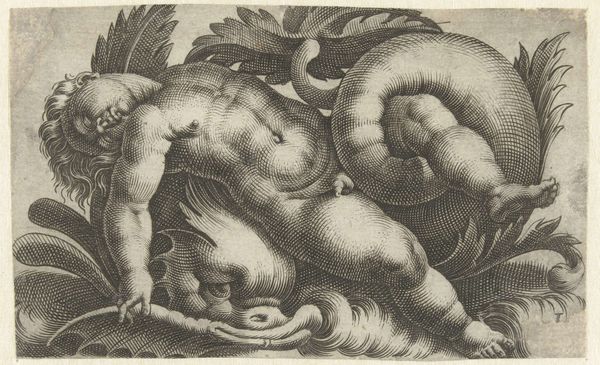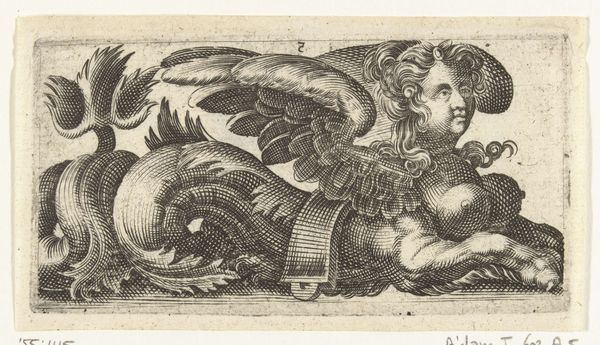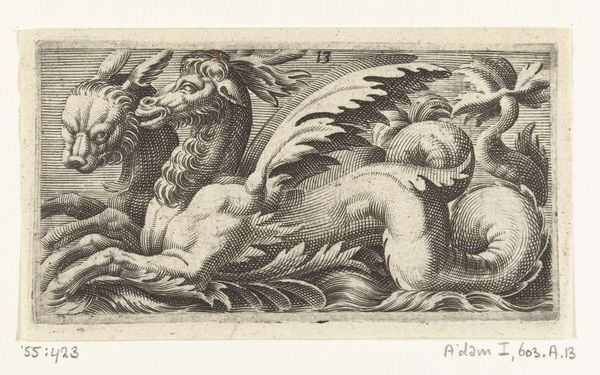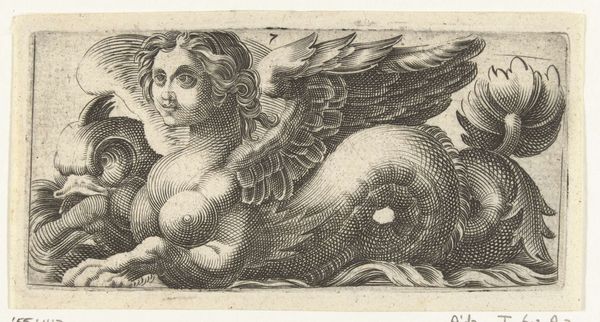
Kind met één arm achter zijn hoofd en één om een vis heen geslagen c. 1526 - 1606
0:00
0:00
adamfuchs
Rijksmuseum
print, engraving
#
pen drawing
# print
#
old engraving style
#
mannerism
#
nude
#
engraving
Dimensions: height 79 mm, width 125 mm
Copyright: Rijks Museum: Open Domain
Adam Fuchs made this engraving depicting a child with a fish sometime before his death in 1606. An engraving like this begins with a metal plate, usually copper. The artist uses a tool called a burin to carve lines directly into the surface. The crisp precision of the lines allows for incredible detail. Look closely, and you’ll see how Fuchs uses hatching— closely spaced parallel lines—to create areas of shadow and volume. It’s a labor-intensive process, demanding both skill and patience. Consider the time it took to render the textures of the child’s hair, the scales of the fish, and the swirling waves below. Prints like this were often made in multiples, allowing for wider distribution of images. They served not only as artworks in their own right, but as a means of communicating ideas, stories, and styles across geographical boundaries. By appreciating the material and the making, we recognize the value of skilled work, and challenge any assumptions about the separation of art, craft, and commerce.
Comments
No comments
Be the first to comment and join the conversation on the ultimate creative platform.
